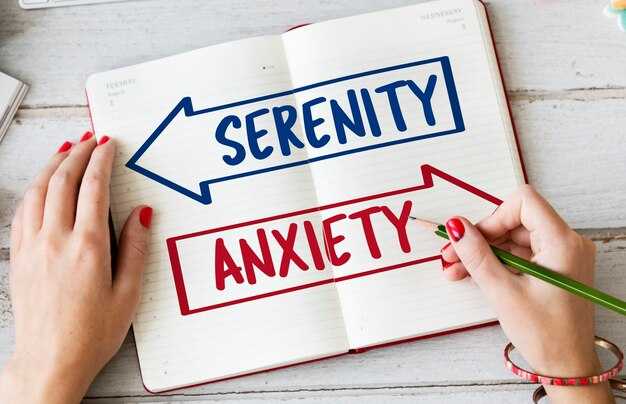Have you ever been in a relationship with someone who seems to vanish emotionally just when you need them most? The quiet stretches feel heavier by the day. The distance between you becomes painful, leaving only the echo of your own questions: “Did I do something wrong?” You try to honor the space they asked for — no more texts, no more calls, no more reaching out — hoping time will mend what’s broken. For a while, everything appears frozen. You try to convince yourself it’s fine, that you don’t care, but inside the uncertainty eats away at you. You wonder if they even miss you or if they simply stopped caring. Then, out of nowhere, something changes. Maybe after days, weeks, or even months you receive a short, seemingly meaningless message or an emoji that, despite its simplicity, feels like everything. That familiar rush of confusion returns. The silence is broken — but not in the way you expected. Which raises the question: why now? Why do they reappear after being so distant for so long?
The reality is they did feel something, but they couldn’t tolerate sitting with it. For someone with an avoidant attachment style, silence is more than a strategy — it’s an automatic defense. When you stop pursuing them and go quiet yourself, they notice it, and that absence triggers something inside them. This content is aimed at anyone caught in that exhausting cycle of confusion and hurt. It will unpack the dynamics behind avoidant responses, explain how your silence can draw them back, and show how you can reclaim your emotional power in the process. Because ultimately, you’re not simply waiting for their return — you’re waiting to stop doubting your worth and to put yourself first. That, more than anything, is where genuine healing starts.
To go deeper, let’s examine what’s happening in the mind of an avoidant partner when they pull away. Outwardly, avoidant people often appear composed, knowing instinctively when to fall silent, when to step back, and when to create distance. It can seem as if they follow a manual for emotional withdrawal. What’s less visible is the inner turbulence they frequently lack the tools or language to process, so they retreat. At the core of this pattern lie three unmet emotional longings — needs they secretly yearn for but are too afraid to acknowledge. These needs are hidden in their emotional landscape, and when they aren’t satisfied, withdrawal follows. They’re not trying to hurt you; they simply don’t know how to remain present with those feelings. Ironically, the closer you try to get, the more they shut down. Let’s explore these needs.
Optimal arousal threshold. Avoidant people tend to have an extremely narrow tolerance for emotional intensity. They desire emotional engagement, but only within a precise range. Imagine a violin string: too tight it snaps, too loose it won’t sing. They need just enough emotional stimulation to feel alive; too much overwhelms and causes them to shut down, too little leaves them bored and disconnected. This balance — the sweet spot between stimulation and overload — is called optimal arousal. When interactions become too intense, avoidance feels out of control and pulls away; when things are too calm, they feel stagnant and suffocated. They thrive on a rhythm of closeness followed by space, intimacy then calm — a delicate dance that, if maintained, helps them stay in the relationship rather than flee.
Phantom partner and the Goldilocks zone. A common misconception about avoidant people is that they long for one specific person. In truth, they often miss the best bits of many past partners: the warmth from one, the intrigue of another, the independence of someone else. These fragments are stitched into an idealized, composite fantasy of love that no single person can embody. That’s where the Goldilocks zone comes in. Avoidants build a phantom version of the perfect partner made from the most appealing pieces of multiple relationships. You don’t need to be flawless to activate this fantasy — a touch of unpredictability, warmth without clinginess, and emotional engagement without intrusion can hit that “just right” feeling. It’s a sense of familiarity even if you don’t perfectly match the fantasy. This emotional pull explains why they sometimes return: you evoke a balance that resonates with something familiar in their past, and they keep circling back to figure out what it is about you that feels so right.
Illusion of control. The most important of these hidden needs is the need to feel in control. Avoidant people equate love with vulnerability, and vulnerability with losing control. To protect themselves they push others away, cut conversations short, or emotionally shut down so they can maintain the upper hand in the relationship. Yet there’s a paradox: although they fear closeness, they also crave it — as long as they believe they’re the ones in charge. That’s why they often leave first or distance themselves first; they need to preserve the sense that they call the shots. If they’re pursued, they tend to pull away harder; if given space with clear boundaries, they may feel empowered to re-enter on their own terms. That perceived control is what often prompts them to reach out again when you stop chasing.
Having outlined these three forbidden needs, how does this play out in everyday life? Consider a story that illustrates the collision of these forces and what happens afterward — where the real transformation can begin.
A real-life example. Meet David and Claire. David fits the classic profile of an avoidant partner: outwardly calm and collected, emotionally distant rather than overtly rejecting. He enjoys the connection when things remain effortless, but whenever Claire shows vulnerability or seeks closeness, he withdraws. There isn’t cruelty or rage; there’s a switch-like shutting off whenever emotional intensity rises. Claire notices the pattern as David’s replies grow shorter and colder. Her attempts at closeness are met with retreat. Then Claire makes a deliberate change: she stops pursuing him. There’s no drama, no confrontation, no pleading for answers. She simply steps back — the texts stop, the calls stop, she stops initiating. She begins to invest in herself again, exploring hobbies, spending time with friends, and engaging in joyful activities. Weeks pass and David remains silent. As Claire focuses on healing, she feels lighter and more in control — no longer waiting for him to return to feel whole.
Then a shift occurs. David notices Claire’s posts: vibrant, content, living a life that doesn’t hinge on him. A subtle unease grows. Why does it bother him that she appears so at ease without him? Why does the thought of her moving on stir an unexpected discomfort? He observes more evidence that she isn’t checking in, and the realization — “she’s not waiting for me” — triggers something. David begins to reach out: a casual “Hey, how have you been?” which soon turns into quicker replies and more effort to engage. The emotional distance that once felt comfortable now feels threatening because he senses he might be losing her.
Here’s what Claire unknowingly activated in David. By creating space calmly and without punitive tactics, she nudged his system. Her absence produced just enough tension to register for him without overwhelming him — the optimal arousal balance. Her life, lived openly and richly, resembled a patchwork of the best aspects of relationships he’d known before, producing a phantom familiarity that pulled him in. And by not chasing him, Claire allowed David to feel as if he had the power to decide whether to return, preserving the illusion of control he needed. When these three needs intersected, David’s internal stance shifted and he began to reconnect.
So what should be done when an avoidant person returns? What’s the healthiest response when they reappear after a period of distance? It’s important to understand that when they reach out, immediate reaction isn’t required. The instinct to reply straight away is understandable — excitement, anxiety, hope — but acting from neediness risks falling back into the old pattern of chasing. Reclaiming your agency means responding with clear intention rather than impulse.
A helpful approach is to reply with calm clarity. Pause, breathe, and acknowledge their message without plunging into an urgent emotional exchange. There’s no need to pretend everything is fine right away if the silence has been long. A composed response could look like: “Good to hear from you. I’ve been focusing on myself and it’s been good.” That kind of reply confirms receipt, signals that personal boundaries have been set, and communicates that emotional availability will be offered only on healthy terms. This subtly redefines the dynamic: it affirms that your time and emotional energy matter, and it removes the expectation that you will always be readily available.
After sending such a message, resist the urge to chase. Let them respond in their own time. If they’re genuinely interested in reconnecting, they will engage; if they don’t, then the decision to maintain your boundaries has saved you from further emotional depletion. Crucially, don’t sacrifice your own needs to accommodate someone else’s emotional patterns. Maintaining boundaries is not manipulation; it’s self-respect. When the habit of chasing is broken, the compulsive fear of rejection and the need for external validation begin to fade. Stopping the chase allows space for them to return on terms that don’t replicate old dynamics.
What happens next is up to you: continue the journey of healing whether they come back or not. The real victory is choosing yourself. For too long you may have tailored your life to meet the needs of someone who remains emotionally unavailable, draining your sense of worth in the process. When the decision is made to prioritize your own well-being, the anxiety, self-doubt, and emotional roller coaster slowly ebb. Choosing yourself doesn’t mean closing off to love or becoming cold; it means refusing to shrink or alter your core to keep someone else comfortable. It means holding your emotional peace as a priority over drama and uncertainty.
This shift isn’t about trying to win the avoidant person back through withdrawal tactics. It’s about recognizing that worth doesn’t depend on someone else’s behavior. When you stop waiting to be chosen, life opens up in new ways: there’s space for healthier relationships and for personal growth. Persistently adjusting to meet an avoidant partner’s needs often feels like abandoning yourself; choosing yourself undoes that pattern. Live fully — messy, bold, and authentic — without incessant fear of losing someone who can’t meet you where you are. When that happens, the right kind of love is more likely to appear: relationships where your whole self is seen and valued.
If ready to put yourself first, start with small concrete steps today. Set a boundary, carve out time for self-care, or decide that your emotional well-being will be prioritized. Choose one action and commit to it. Share what you’ll do next in the comments below, and if this message resonated, subscribe and hit the bell for more guidance on building healthier, more fulfilling relationships.


 Why Avoidants Only Chase You When These 3 Hidden Needs Are Triggered | Avoidant attachment style">
Why Avoidants Only Chase You When These 3 Hidden Needs Are Triggered | Avoidant attachment style">

 Anxious vs Avoidant: The Dramatic Relationship Trap You Can’t Escape | Avoidant attachment style">
Anxious vs Avoidant: The Dramatic Relationship Trap You Can’t Escape | Avoidant attachment style">
 7 SECRET TESTS You MUST Pass for AVOIDANTS to CHOOSE YOU | Avoidant Attachment Style">
7 SECRET TESTS You MUST Pass for AVOIDANTS to CHOOSE YOU | Avoidant Attachment Style">
 Why You Might Still Feel Lost — EVEN After Therapy, Courses & Trying Everything">
Why You Might Still Feel Lost — EVEN After Therapy, Courses & Trying Everything">
 When the Bedroom becomes a Chore…">
When the Bedroom becomes a Chore…">
 I Had No Friends… But Here’s What Finally Changed">
I Had No Friends… But Here’s What Finally Changed">
 Commitment means MORE than not Getting Divorced">
Commitment means MORE than not Getting Divorced">
 Avoidant Attachment: This "Shift" Isn’t Rejection. It’s Love (Don’t Walk Away) | Jordan Peterson">
Avoidant Attachment: This "Shift" Isn’t Rejection. It’s Love (Don’t Walk Away) | Jordan Peterson">
 ">
">
 How Avoidants Test If You’re Still Available After Rejecting You">
How Avoidants Test If You’re Still Available After Rejecting You">
 A Warning to Selfless People Pleasers.">
A Warning to Selfless People Pleasers.">